Need to power up your home DJ and/or production studio? A good set of studio monitors is critical for hearing your mixes accurately, and you can attain a high-quality, booming system for around $200-300 per monitor. Whether you’re still hunkered down trying to make a go of live-streaming your DJ sets or you’re doubling down on your sound by producing your own tracks, it may be time to invest in a proper pair of studio monitors or to upgrade from an old or undersized pair.
A vast expanse of studio monitor options exists in the world, and the quality of those monitors’ cabinetry, audio drivers, and other internal electronics all come with an associated cost that can drive prices up to many thousands of dollars per loudspeaker. The good news is that advancing technology continues to trickle down to budget-priced monitors – to the point you can choose from a buffet of high-quality options for around $300 or less per monitor.
We have selected a group of 4 monitor sets to compare that have proven to be popular and effective for DJs and producers. They are not the absolutely most affordable studio monitors out there, but they all come from budget-minded series that provide a lot of value for the money and enough oomph to power your home DJing and music-production pursuits. At a time when it’s still difficult for many people to go out and hear different monitors before choosing one, hopefully this can provide some guidance.
All of these monitor pairs are active, near-field studio monitors. Active means that the amplification is built-into the monitors, and no additional amplifier is needed. Near-field means that they are optimized for listening close to the monitor, as opposed to mid-field or far-field monitors. Active, near-field monitors are the most common designation for studio monitors, especially in this price range.
The contestants
Here, we review and compare 4 excellent options for their sound, power, and other options such as room correction processing. First off, let’s take a high-level look at each product – noting that all are bi-amped studio monitor pairs:
Adam Audio T8V

- Price: $299 each street price (T5V available for $199 each; T7V available for $249 each)
- Audio Inputs: 1 x XLR, 1 x RCA
- Output power: 90W total (70W from the 8″ woofer; 20W from the 1.9″ tweeter)
- Frequency Range: 33Hz-25kHz
- Dimensions HxWxD: 15.8″ x 9.8″ x 13.2″ (400 mm x 250 mm x 335 mm)
- Weight: 21.6 lbs (9.8 kg)
Kali Audio LP-8
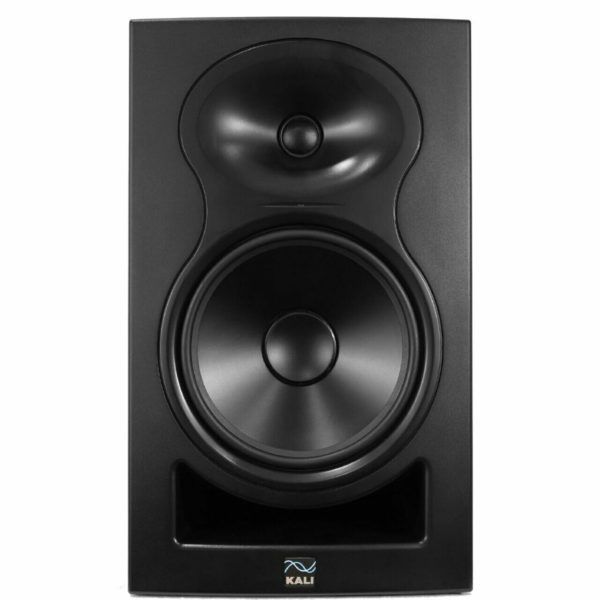
- Price: $199 each in the DJTT store (LP-6 available for $149 each)
- Audio Inputs: 1 x XLR balanced, 1 x 1/4″ TRS balanced, 1 x RCA unbalanced
- Output power: 100W total (60W from the 8″ woofer; 40W from the 1″ tweeter)
- Frequency Range: 37Hz-25kHz
- Dimensions HxWxD: 16.5″ x 10″ x 11.25″ (435mm x 355mm x 320mm)
- Weight: 25.6 lbs (11.6 kg)
KRK Rokit 7 G4
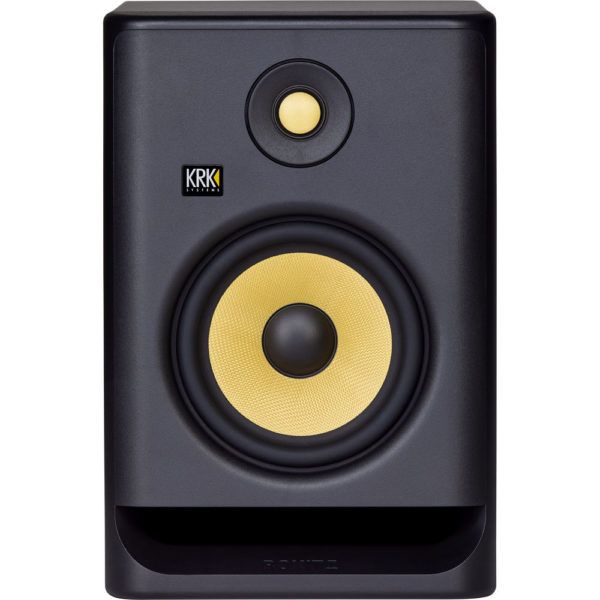
- Price: $209 each in DJTT store (Rokit 5 G4 available for $179 each; Rokit 8 G4 available for $299 each)
- Audio Inputs: 1 x XLR/1/4″ TRS combo input, balanced
- Output power: 145W total
- Frequency Range: 42Hz-40kHz
- Dimensions HxWxD: 13.4″ x 8.9″ x 11.2″ (339 mm x 225 mm x 284 mm)
- Weight: 16.8 lbs (7.6 kg)
Yamaha HS7

- Price: $319 each in DJTT store (HS5 available for $199 each; HS8 available for $369 each)
- Audio Inputs: 1 x XLR, 1 x 1/4″ TRS, balanced
- Output power: 95W total (60W from the 6.5″ woofer; 35W from the 1″ tweeter)
- Frequency Range: 43Hz-30kHz
- Dimensions HxWxD: 13.1″ x 8.3″ x 11.2″ (332 mm x 210 mm x 284 mm)
- Weight: 18.1 lbs (kg)
Audio Character
In general, studio monitors are meant to output a “flat” frequency response. This is so that no part of the frequency spectrum is hyped, and you can improve your music productions by hearing the most accurate audio reproduction of what you’re recording or playing. Even if you don’t produce music, that can be helpful for recording/streaming/broadcasting DJ sets.
However, all four of these monitor pairs sounded noticeably different, as will nearly any monitors that you compare side-by-side. The intent here is not to decide which pair sounds best, which is highly subjective, but rather to point out their individual characteristics and comparative differences. I compared their sound using the same signal path and source material, including recent dance music across many genres, as well classics from the ‘70s, ‘80s, and ‘90s.
Adam Audio T8V
German loudspeaker company Adam Audio established a great reputation among audio professionals for the sound of its higher-end monitors, and now it is bringing some of its technology down to budget-minded products. One of those aspects, the T8V’s accelerated-ribbon tweeter, is supposed to prevent distortion from the high frequencies coming from the tweeter by moving the air faster.
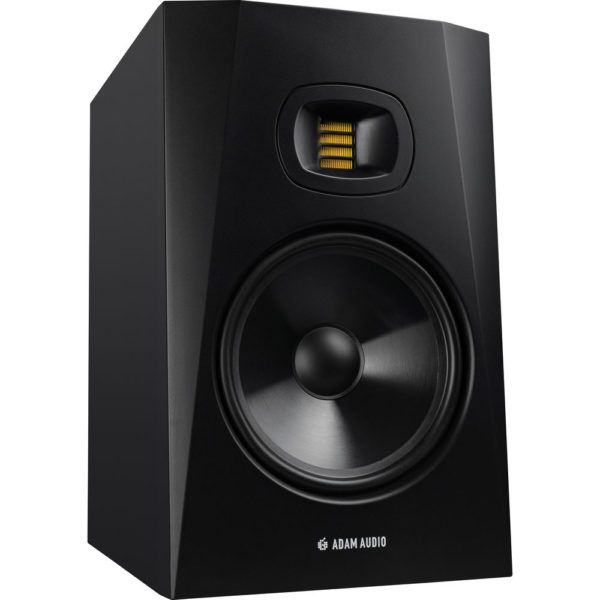
The T8Vs ended up being my favorite pair for listening to over extended periods. They exhibit an excellent all-around frequency balance, frequency separation, and definition of the stereo image. They seemed to have the largest sweet spot, which is the area where the audio sounds best when you triangulate yourself between the monitors. The T8Vs also have a solid bass presence and great bass definition but are not bass-heavy. Of these 4 monitor pairs, the T8Vs emitted the least amount incidental noise or hiss.
Kali Audio LP-8
In contrast to Adam Audio, California’s Kali Audio started out in the budget-monitor market with the intent to give their customers an unprecedented amount of bang for the buck. Kali’s team has an impressive background in pro audio, and they fully intend for their monitors to emit a transparent, accurate sound most intended for producing/mixing/mastering music.

The LP-8’s sound certainly lives up to the flat frequency response, where no frequency range is overly hyped or under-represented. The bass sounds smooth and full, though they are not artificially bass-heavy. The LP-8s demonstrate a beautiful clarity of sound, as well as the most satisfying – the word “magic” comes to mind – sweet spot of these 4 monitors pairs, although the sweet spot was rather narrow. There was a slight amount of audible hiss, which was the main mark against the LP-8 in comparing them to the T8V’s sound.
KRK Rokit 7 G4
Frankly, the KRK Rokit 7 G4s sound awesome: heavy bass, punchy transients, crispy high frequencies, and great stereo imaging. When listening to beat- and bass-oriented music, these monitors deliver a really energetic interplay between various elements like the kick, snare, and hi-hats.
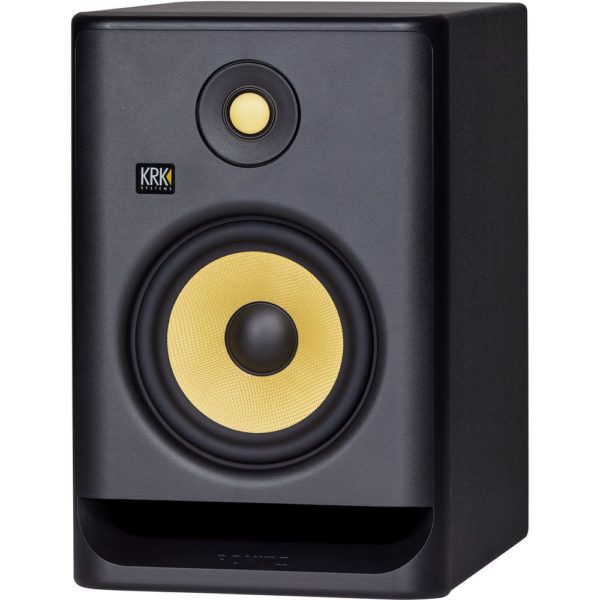
It sounds like there is more coloration to the Rokit 7 G4’s audio than with the LP-8 and T8V. For example, you can hear a bassiness and a general frequency blending that can make tracks sound fuller. I found the resulting sound very pleasant for listening and performing DJ sets, but may not be ideal for the purposes of transparency when producing music.
Yamaha HS7
The Yamaha HS7s are not bass-heavy but perhaps exhibit a tiny bit more bass than the LP-8s. The HS7’s sound is also chunkier in the mid- and high-ranges; elements like snares, horns, hi-hats, and synths have a little more body. That punchy mid- and high-end can feel harsh over time as ear fatigue sets in. When considering the HS7’s punchy sound on its own, it grew on me after a while. However, against the flatter response curves of the other monitors, I would not choose to listen to music solely on the HS7s.
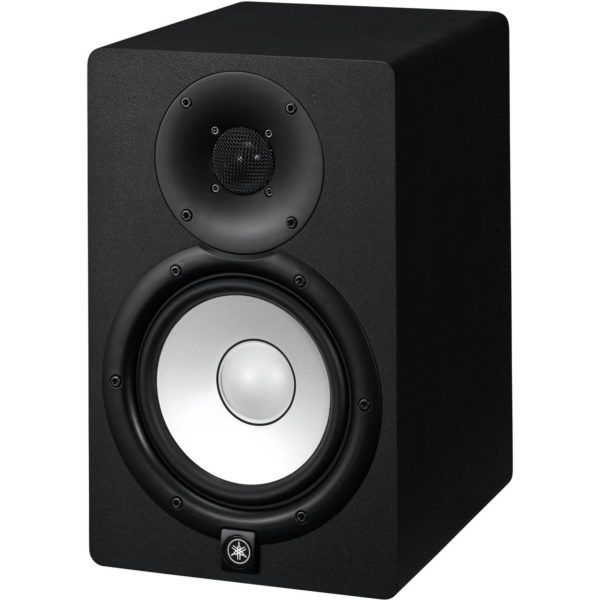
I should note that the HS7 is Yamaha’s continuously developed descendent of the legendary NS10 speakers, which began as consumer bookshelf speakers in the ‘70s and later became mainstays in pro studios as reference monitors. Audio engineers tended to say that if you could make your music sound good on the NS10s, then it would sound good anywhere.
While the HS7 is very much a modern-day monitor, it still retains some of that treble response from the NS10 that people often cited as causing ear fatigue but also valued as a reference to what much of the music-listening public would end up hearing. So, I personally like the HS7 as a secondary monitor for referencing mixes or for when you really need something to cut through a lot of noise, like for booth monitors.
Audio Output Power
With studio monitors, you want enough wattage – or output power – so that you can have them as loud as you want and still have headroom. That’s important, because the closer to their maximum volume, the more likely you are to introduce distortion in the output.
To compare this, I set all the monitors to their +0dB setting and fed them the same audio material from the same source to compare their perceived loudness. The wattage tells part of the story, but not all of it, as different speakers distribute the power to the woofer and the tweeter in different proportions.
The quietest: Adam Audio T8V: 90W total output
At the +0dB setting, the T8V was the quietest monitor of the group by a significant margin. The volume knob on the back panel turns all the way up to +18dB, and I could turn it most of the way up without hearing distortion.
The loudest (& cheapest): KRK Rokit 7 G4 – 145W total output
This is by far the loudest of the monitors at +0dB, as its wattage would imply. This is quite impressive, considering that it’s also the lowest priced monitor of the group. An encoder on the back adjusts the output from -70dB to +11dB using the backlit display.
Middle man: Kali Audio LP-8 – 100W total output
At +0dB, the LP-8’s output is noticeably higher than the T8V, but somewhat modest and not as loud as the smaller pairs. With the volume knob to the max setting of +6dB, it’s louder than the HS7 at +0dB, but not as harsh.
Middle man: Yamaha HS7 – 95W total output
The HS7 is slightly louder than the LP-8, which is louder than the T8V. Like the others, the HS7 is significantly less loud than the Rokit 7 G4.
The larger-sized monitors here – Adam Audio and Kali Audio – include larger woofers, which help to widen the frequency range to include lower frequencies (see stats above). While the 8-inch woofer monitors in this round-up aren’t as loud as the 7-inch woofer monitors, other 8-inch models on the market may come with higher output power (and probably a higher price as well).
Room Response Controls and DSP
Most of today’s studio monitors – even in the budget-price range –include some level built-in filtering, EQ, or digital signal processing (DSP). This is intended to provide some frequency balancing that you may need if you can’t position the monitors in an ideal place, like 3 feet away from any wall. On the simple side, these controls will boost or cut a few dBs of high-end or low-end, while sophisticated onboard DSP can process and optimize the monitors’ audio for the acoustic conditions of your space.
Adam Audio T8V
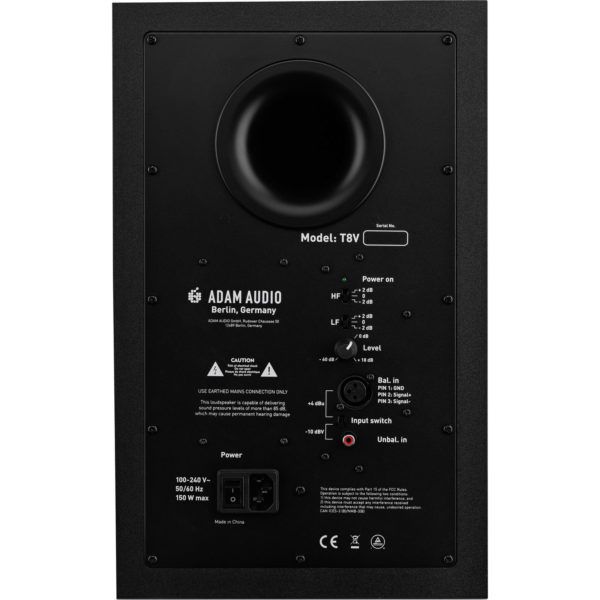
Each T8V monitor includes 3-position, +2dB/0dB/-2dB, switches for the high-frequency driver and the low-frequency driver.
Kali Audio LP-8
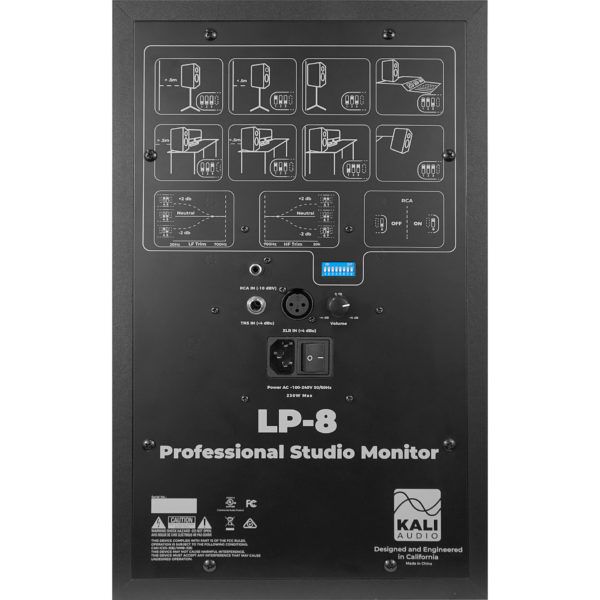
The LP-8 monitors include 8 small “DIP” switches on the back, the positions of which control the onboard frequency correction. Diagrams on the back show the switch positions to optimize for 8 types of speaker placement and also for controlling the high-frequency trim, low-frequency trim and for turning the unbalanced RCA input on or off.
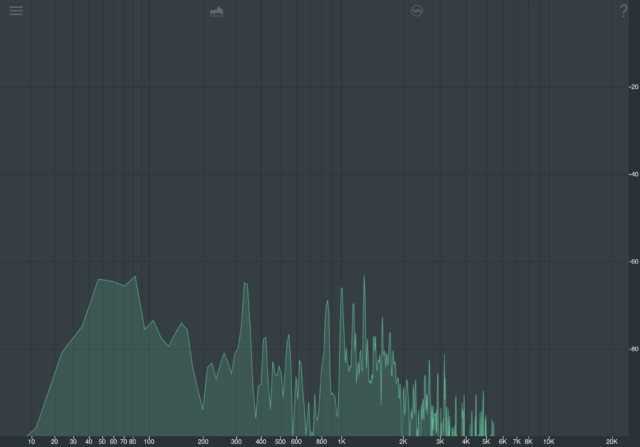
KRK Rokit 7 G4
This monitor has the most sophisticated DSP of the group. The blue backlit display on the back lets you choose between 25 total combinations of low EQ adjustment and high EQ adjustment. This gives you a broad amount of flexibility with the sound output, and the manual gives you tips on placing the monitors and then using reference music that you know very well to decide if or how to adjust the EQ.
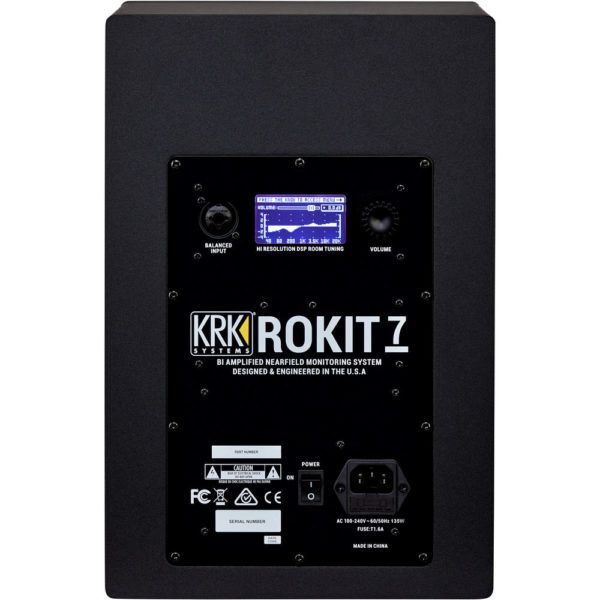
But the real kicker is the free KRK Audio Tools app (iOS/Android) that uses your mobile device and pink noise to analyze the Rokit 7 G4’s audio and then recommend which EQ settings to use on the monitors. That’s extremely helpful because without that analysis, you’d have to really know what you’re listening for at an expert level to best adjust the EQ settings on your own. The app also has 5 monitoring tools that are free for anyone to use: a spectrum analyzer, level meter, delay and polarity analyzers, and Monitor Align for helping you set the right position for your monitors.
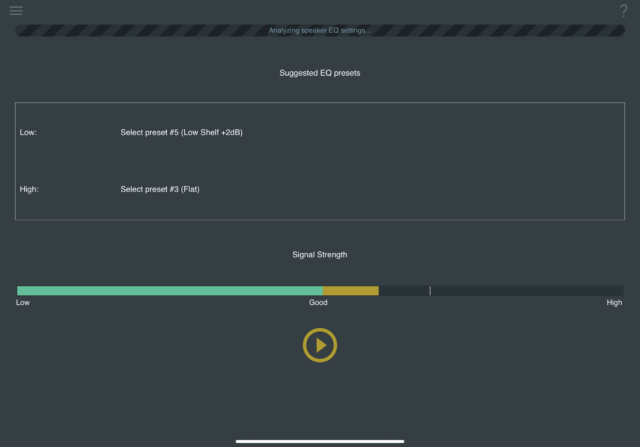
Yamaha HS7
Each HS7 monitor includes a 3-position switch, +2dB/0dB/-2dB, for high-frequency trim and a 3-position switch, 0dB/-2dB/-4dB, for low-frequency adjustment.
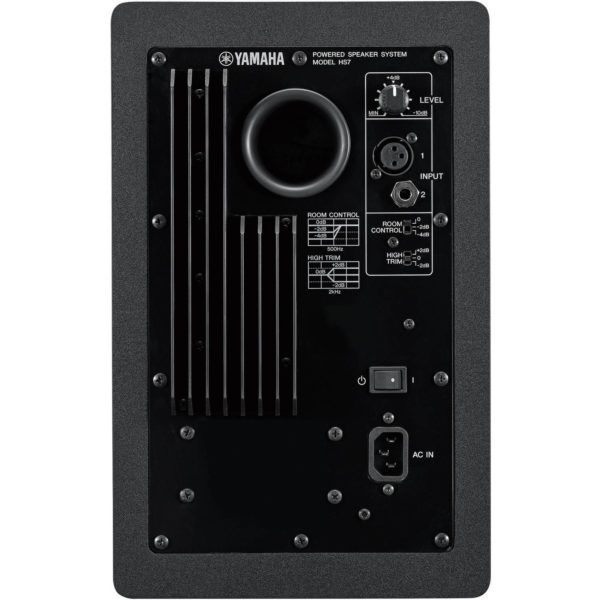
If you choose monitors without their own room correction system like the one the Rokit 7 G4 has, you could approach room correction with software packages. For example, take the IK Multimedia ARC System 3 or Sonarworks Reference, which use a microphone to record your room’s response to frequency sweeps and then create a corrective EQ curve on a plug-in that you place on the master channel of DAW software. However, these won’t work for DJ software that does not accept plug-ins on the master output.
Audio Inputs and Size
While the right cables and adaptors let you work around any audio connector incompatibilities, if you want one set of monitors to meet a diverse set of purposes at once, a selection of audio inputs is nice. I’m accustomed to monitors that include balanced XLR and 1/4-inch TRS, as well as unbalanced RCA inputs.
However, of these 4 monitor pairs, only the LP-8 included all three of those input options. The T8V includes balanced XLR and unbalanced RCA; the Rokit 7 G4 includes a single balanced combo XLR/TRS input; and the HS7 includes balanced XLR and balanced TRS inputs. You can use multiple inputs simultaneously, giving your studio setup an extra degree of flexibility.
Considering the size of the monitors, for the sound character and the little bit of lower frequency response you get with the two pairs of larger, 8-inch woofer monitors here, you’d have to accommodate a significantly larger footprint, which is a real concern for some people with limited space (see dimensions and weight details above).
The Value Proposition
DJ TechTools chose this selection of monitors to review comparatively because they were all deemed to be worthy options for home DJing, live streaming, and music production. After testing and comparing them all extensively, that is still case, but some distinctions did make themselves clear.
If you’re a DJ heavily focused on music production, you want the most unbiased, balanced sound. Of these 4 sets, I believe the Adam Audio T8V and Kali Audio LP-8 provide. I slightly gravitate toward the T8V, but the LP-8’s lower price and extra audio inputs and DSP options make it the better value.
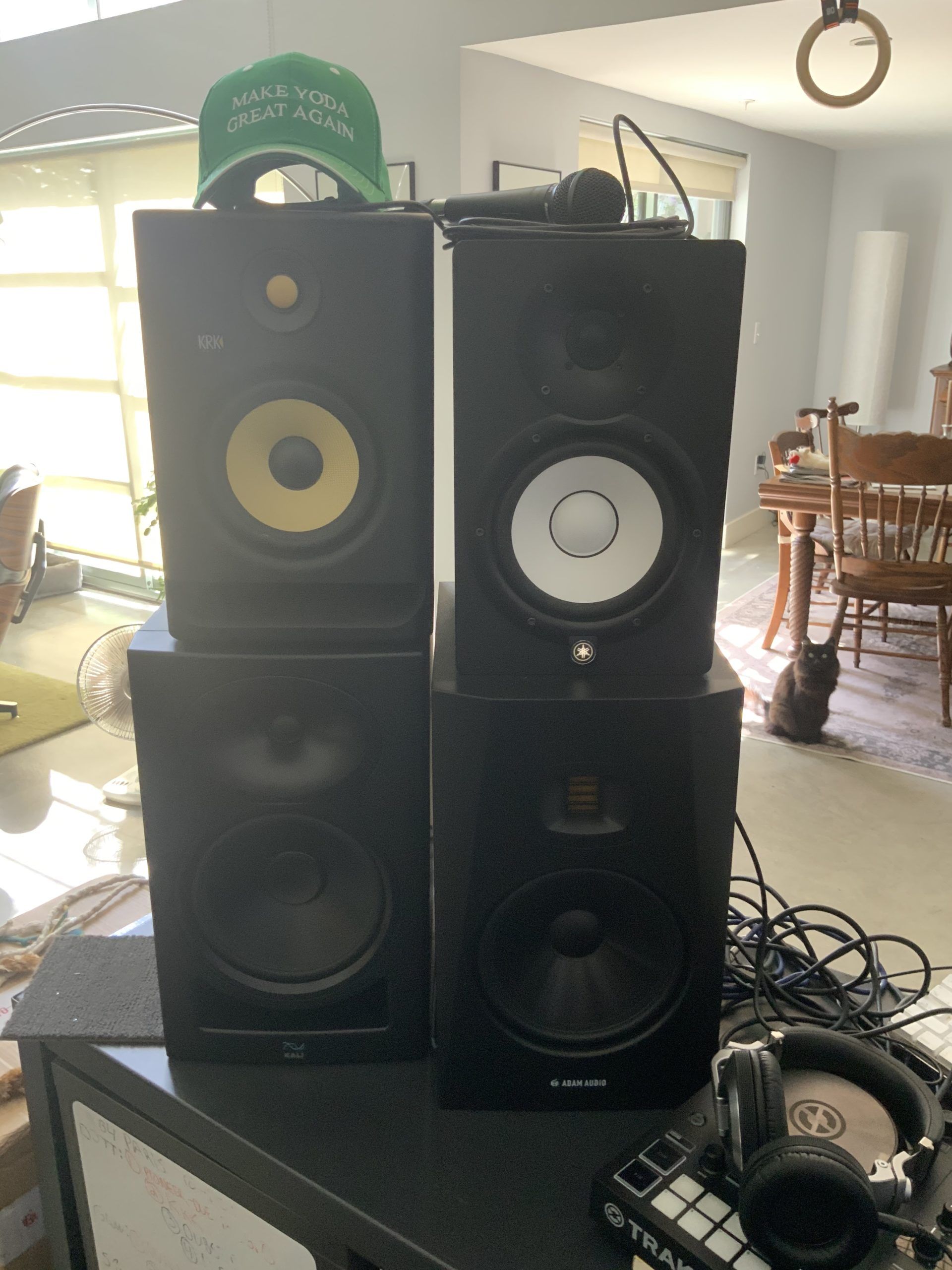
If you’re a DJ heavily focused on music production, you want the most unbiased, balanced sound. Of these 4 sets, I believe the Adam Audio T8V and Kali Audio LP-8 provide. I slightly gravitate toward the T8V, but the LP-8’s lower price and extra audio inputs and DSP options make it the better value.
Yet for the best value overall, I would have to point toward the KRK Rokit 7 G4. It also sounds amazing, albeit with a degree of frequency bleed and hyped bass. Its built-in DSP EQ and app-based room analysis system goes the farthest to ensure proper speaker placement and frequency compensation. In addition, it delivers the highest output power, in a compact size, for a low price.
Do you have a set of home monitors that you love and would want to see on this list? Do you agree with Markkus’ review? Let us know in the comments below.
Editor’s note: Big shout-out to Chantski!, who lent us his pair of Yamaha HS7 monitors for this review while demo units were not available due to temporary shortages related to COVID-19 restrictions.





